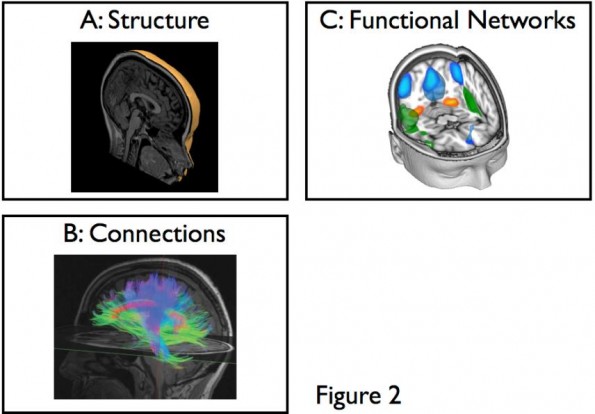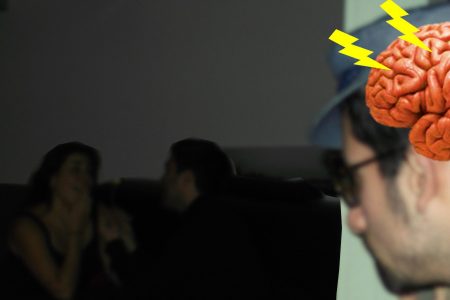Early dementia and functional brain networks
This image shows the devastating changes in the brain of a dementia patient. Finding an early marker of dementia is currently the Holy Grail of dementia research.
Brain scans in dementia research
In my research I focus on finding changes in the brain in dementia as early as possible. In recent years we have studied changes in brain structure (Figure 2A), in brain connections (2B) and in so-called ‘functional brain networks’ (2C). All three techniques revealed important information about advanced dementia brains.

Scanning the brain ‘at rest’; resting state FMRI
Functional brain networks (2C) are of special interest in relation to dementia. A functional brain network is a collection of brain regions that show the same fluctuations in spontaneous brain activity. Until recently we thought it was necessary to scan the change in brain activity during a test to understand brain function. We now know this is not true. Fluctuations of the brain at rest can be made visible on scans and reveal important information about brain function.
I expect that with this technique, called ‘resting state FMRI’, we will be able to show changes in brain integrity in earlier phases of dementia than when we only focus on brain structure.
The near future
In the coming years I want to investigate this further, in collaboration with my colleagues in Amsterdam, Rotterdam, Nijmegen and Leiden. It will require a new research grant for me to apply the most advanced scanning and analysis techniques for brain structures and functional networks in patients. Further, I want to study structural and functional brain scans of volunteers who are at risk (or even certain) to develop dementia later in life, to see whether the scans can reveal early dementia changes in the brain before symptoms become visible. If so, these scans could be useful for early diagnosis.





